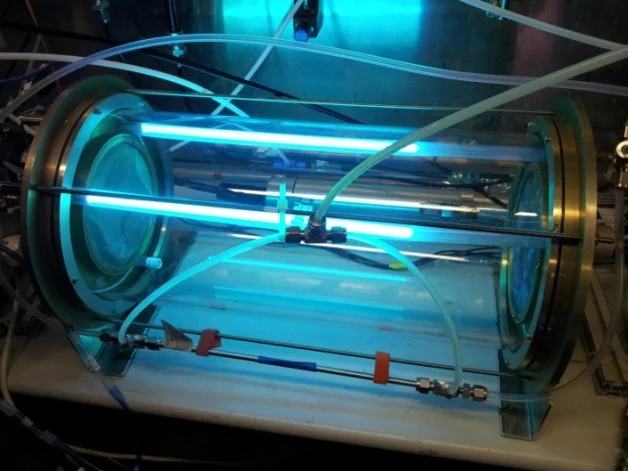Overview
The Potential Aerosol Mass (PAM) Oxidation Flow Reactor (OFR) is a tool that provides a highly oxidizing environment for the simulation of atmospheric oxidation processes on timescales ranging from a day to several days in a few minutes in the laboratory and was designed by Prof. William Brune's group at Penn State. Many groups use the PAM reactor to provide a source of secondary organic aerosol (SOA) particles. Our purpose is to use the PAM reactor as a tool to simulate secondary organic aerosol formation from different combustion emission sources such as traffic emissions (on-road vehicles, aircraft, shipping), wood burning emissions as well as other sources. This is done to complement our mobile smog chamber (http://www.psi.ch/lac/mobile-smog-chamber) which allows the analysis of batch samples, with the possibility of real time sampling during driving cycles or combustion processes.
Link to the PAM Wiki
Link to the PAM Wiki
Technical Description
Our version of the PAM reactor is a Pyrex cylinder of approxiamtely 45 cm L x 20 cm W, providing an internal volume of roughly 15 liters. UV lamps (λ =185 nm and 254 nm) are located inside the chamber to produce and photolyse O3. The relative humidity in the system is adjusted using a Nafion humidifier.
Current activities
- Inter-comparison of Potential Aerosol Mass (PAM) Oxidation Flow Reactor (OFR) with traditional smog chambers and other flow reactors
- Secondary organic aerosol formation from combustion emissions:
- residential wood combustion (see Bruns et al.)
- gasoline vehicles (see 5th PAM Users Meeting Presentation, and Pieber et al.)
- aircraft engines
Related publications
You can find a collection of recent OFR-publications here: https://sites.google.com/site/pamwiki/publications


